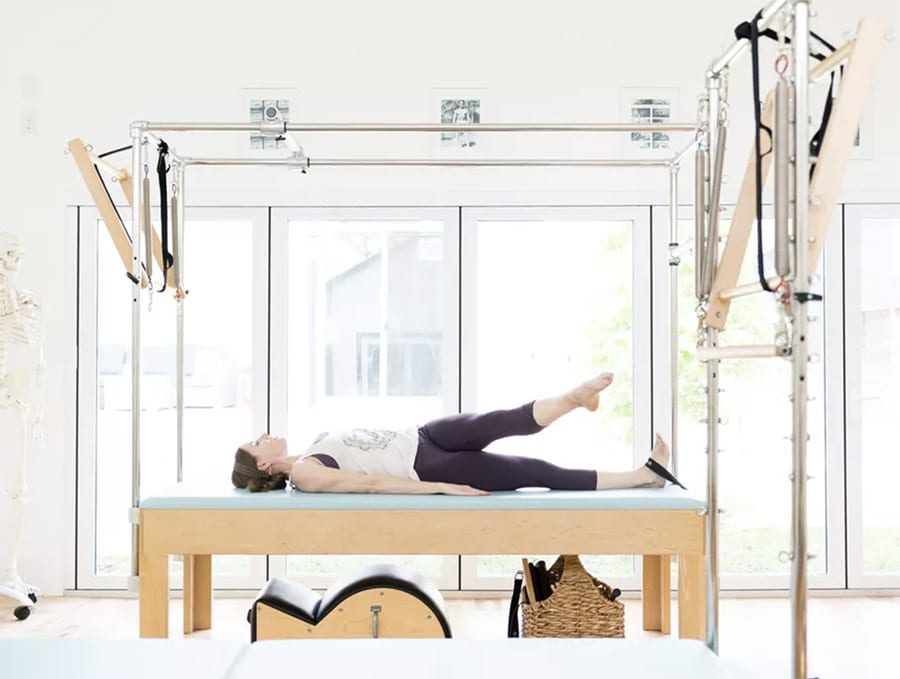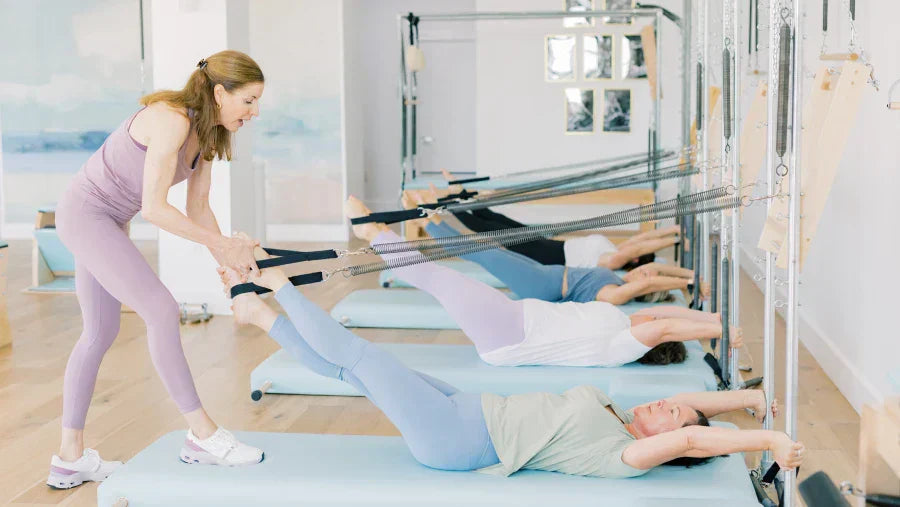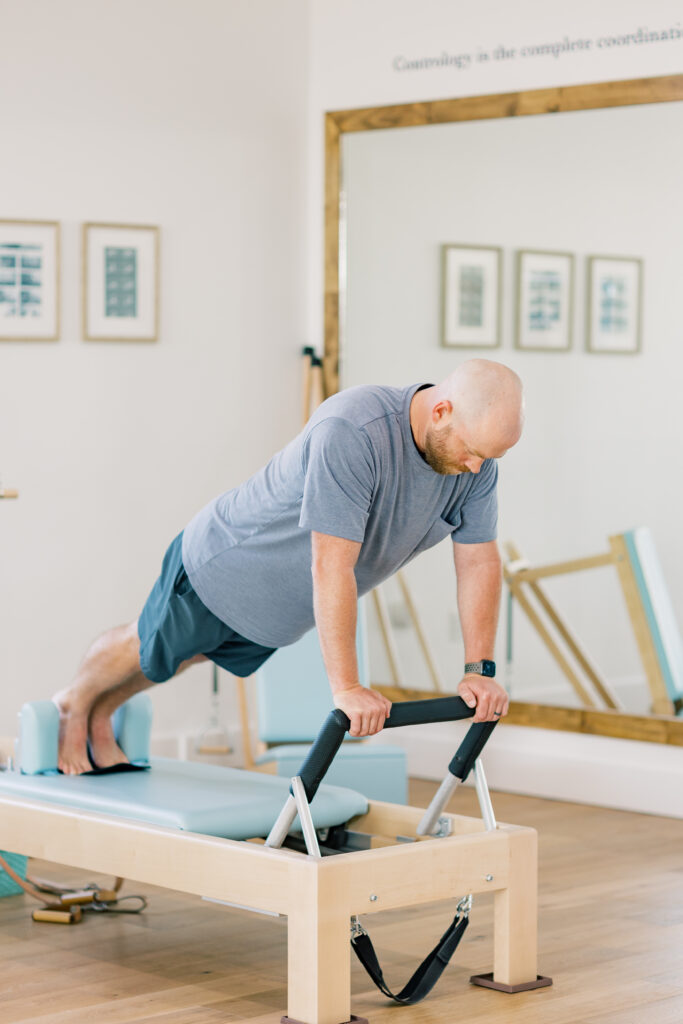When it comes to the topic of stability in the Classical Method of Pilates, it is viewed as dynamic in nature and part of the fundamental movement skills set that is merely layered upon to serve the largest, fullest expression of healthy movement. This in turn serves the goals Joe had for his method of movement according to Return to Life, which are robust circulation and the internal shower for the sake of ultimate health and conditioning.
In the Classical Method, stability is not considered an end goal or intent of any one exercise, but rather a layering piece to connect the body into its own link system. Stability is considered a vibrational component versus a static entity occurring to serve the bodily organization, so it may move efficiently, intelligently, and freely. However, that is not to say that its importance is not valued and embedded into the body, especially when more of it may be needed for the particular individual’s needs. In essence, we always teach to the body in front of us. However, the greater intent is always for the sake of controlled, organized MOVEMENT.

For example, let’s discuss the exercise that is always brought up: The Single Leg Circle. When I have read contemporary style descriptions or intentions of the exercise, stability is always highly emphasized. However, could this be because there is not the awareness of this exercise in its fullest expression, with the spinal twist and working hip movement off the mat? It is easy to understand how someone might become misinformed about the goal of this exercise being about stability if one is not aware of the exercise in its fullest expression. However, once one adopts the philosophy that every exercise in Pilates is about the spinal movement being sought after, whether it is flexion, extension, rotation, or lateral side flexion (or a few of those layered together), then it becomes very clear that dynamic stability is a small layering piece to the overall big picture. Of course, we need the supporting side to dynamically stabilize to provide a frame of support for the moving parts. Hence the reason, Joe created a foot strap and utilized it around the supporting ankle side to aid in the stability and oppositional reach back into the center to provide support. I thought one of my classical mentors summed it up so succinctly when she stated, “The circle is only as big relative to the stability of the supporting side.” Now, think about Single Leg Circle in its ultimate, advanced version in the advanced Short Box Series or on the Ladder Barrel: the spine is fully extended over the Short Box or Ladder Barrel in a big suspended arc with arms extended and hands either in the well, tracks, or floor. The supporting, lengthened leg side is dynamically stabilizing with the foot reaching through the heel and dorsi-flexed under the foot strap or rung to provide oppositional reach back into the center. This, in combination with the belly scoop up the entire length of the anterior spine, (another fundamental skill) provides a framework of support for the circling hip and leg side to move freely as one unit. This in turn serves the ultimate movement of the spine: rotation and extension. Now think back to if this exercise was initially taught about stabilizing the working hip/side and not letting it come off the mat? Do you feel the rigidity that would create in the body, and how it wouldn’t serve the extension and rotation of the spine of this exercise in this most advanced, fullest expression?
Often stability is described by instructors as being created by the oppositional reach/lengthening from the center. When I thought about this, I found myself taking this concept further: the vibrational stability created by oppositional lengthening from the center morphs into a more sophisticated, evolved version of itself, which is the energy of suspension. That is when true connection and partnership between the body and the springs occur suspending a full -bodied, breathing infinite entity in motion. This acquired, practiced suspension becomes second nature to the entity and can translate to everyday life movements.



